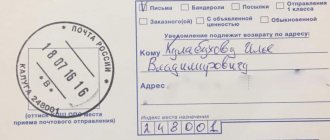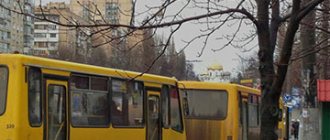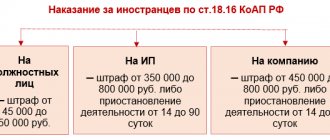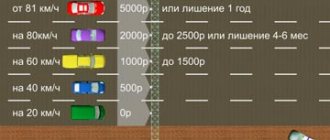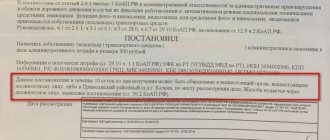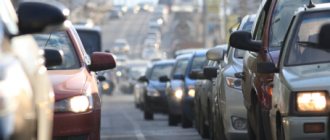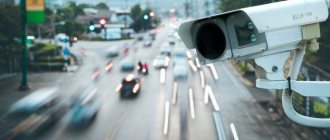Tip 3: Keep your complaints to the point.
It makes sense to file a complaint only when you are really able to prove that you did not violate the rules. Let’s say a shadow from a car fell on a dedicated lane, the camera counted it, and the inspector, without looking, issued you a resolution under Part 1.1 of Art. 12.17 Code of Administrative Offenses of the Russian Federation. In each specific case there will be nuances that you can cling to, but the principle is the same for everyone.
“You need to clearly formulate what exactly your disagreement is,” says Sergei Radko. “Many people say: I received a fine for speeding, it says: “I was driving 85 km/h,” but I remember exactly, the speedometer showed 79 km/h! The position: “I didn’t violate because I couldn’t violate” is not serious, more weighty arguments are needed.”
The main evidence that the driver is right is as follows:
- Clear correspondence of the photo or video to reality: incorrect license plate number, car of a different brand if the numbers and partly the letters of the license plate match;
- The license plates in the photo are not legible;
- If the car cannot technically move at the speed specified in the regulation or was parked at all;
- In the place where the violation was recorded, prohibitory signs were not installed or their effect has expired;
- The violation was committed not by the owner himself, but by a third party, for example, a manager by proxy, or the car was sold at that time, but the new owner did not re-register;
- The camera that recorded the offense is not certified to detect it;
- The violation was filmed by one camera, but there were several decisions.
Bankiros recommends!
Otkritie Bank, Lit. No. 2209
Credit card “120 days - online” 120 days without interest, up to 500,000
Apply for a card
Drivers often try to appeal to the fact that signs warning about video recording are not installed. But the absence of sign 8.23 or marking 1.24.1 is not grounds for canceling the resolution.
The process of challenging a fine
When discussing the question of how to appeal a fine, you should be aware of two options for resolving the issue:
- In a pre-trial manner;
- Judicially.
Pre-trial procedure - appeal to the traffic police department, which sent the decision. Having direct evidence that you are right, you can try to send a complaint to the inspector, but for the most part, fines are not canceled. The application can be sent to:
- By registered mail;
- Personally at a reception with the inspector;
- Send through the traffic police online service.
Tip 4. Appeal the fine through the district court
Of course, nothing prevents you from filing a complaint with the organization that issued the fine. There are several such structures in Moscow. If you do not agree with the fine for parking under the signs “No Stopping”, “No Parking” or for parking on the lawn, you need to contact the Moscow Administrative Road Inspectorate (MADI). If you are charged with non-payment of parking, go to the State Public Institution “Administrator of the Moscow Parking Space” (GKU AMPP). Other fines can be appealed to the department of the State Traffic Inspectorate that issued the resolution. This can be done in person or by mail.
How long does it take to challenge a traffic police fine?
The cells are given two months to pay the fine. During this period, the car owner can either pay off the debt or contest it. According to the law, ten days are given to appeal. They begin to count from the day the car owner received a letter with the decision in the mail or picked up a copy of the document from the State Traffic Inspectorate.
However, notifications from video and photo cameras arrive in one or two weeks and it is impossible to meet this deadline. These ten days can be restored if the driver missed them for a valid reason, for example, illness, being on a business trip, etc. If all the deadlines have passed and the document has received legal force, you need to:
- pay the fine with a 50 percent discount in the first 20 days;
- petition the court to restore the statute of limitations for good reason.
After the driver submits a petition, the court will request from TsAFAP original documents on traffic violations. However, the center’s specialists, as a rule, cannot provide them: decisions handed over to bailiffs are destroyed. The judicial authorities do not accept copies, and as a result, due to the lack of evidence of an offense, the fine is canceled.
Also read: My name is Bond, James Bond: 007 cars on the Russian secondary market
Content
- What fines can be challenged?
- Who can challenge fines and how to find out if they exist
- How long does it take to challenge a traffic police fine?
- Where to send a complaint
- What complaints should be sent to the traffic police?
- What complaints should be sent to court?
- How to file a complaint to challenge a fine
- How to file a complaint to appeal a traffic police fine
- How to challenge fines online
- How long does it take to process complaints?
- What are the chances of successfully challenging a fine?
- What to do if the complaint is not satisfied
- How to get money back for an erroneous fine
If a driver receives a fine for a violation that he did not commit, he can appeal it. We tell you in what cases sanctions can be challenged, within what time frame and how to appeal a traffic police decision.
Statement
It is important that a lot depends on the correctness of drawing up a claim or complaint against a fine imposed by the traffic police. An incorrectly written paper will bring the car owner closer to losing. In general, an application to appeal a traffic police fine is practically no different from any other statement of claim. The document is drawn up according to the same rules. The algorithm of actions according to which an application for appeal should be completed is as follows:
- indicate the name of the body receiving the appeal in the upper right corner of the sheet;
- provide information about yourself, including last name, first name, patronymic, contact information and registration address;
- after writing the “header” in the center of the sheet, write the word “complaint” (“statement of claim” in case of going to court);
- state the main substantive part of the complaint, in which you need to state the claim and indicate your point of view; it is important not to forget to enter information about the fine received, witnesses to the incident and evidence;
- write a conclusion containing the date the document was drawn up and the signature of the plaintiff.
Writing an application to appeal a fine will not cause difficulties if you carefully look at the information boards located in the department. According to the law, all samples of filling out documents must be posted on them. It is important to follow them completely because if important information is missing, which many motorists inadvertently do not fill in, the authority may not consider the application.
Separately, something needs to be said about handwriting. To avoid problems with character recognition and errors in personal data, it is recommended to fill out the application in block letters.
After submitting the application, the motorist will have to wait for a response. Personal reception of citizens when considering appeals of a traffic police fine is not provided, therefore it is so important to indicate as many details as possible in the body of the application and attach a copy of the resolution.
You should not expect that the complaint will be satisfied without fail. If the employee who issued the order did not make a serious mistake recorded on a photo or video camera, then the law will be on his side. The final verdict will be on the side of the organization that issued the fine.
What violations are recorded by cameras?
Cameras are:
- stationary - mounted on poles and other fixed structures of road infrastructure;
- mobile - mounted on a mobile tripod, public transport or special vehicles. Such cameras are needed to record violations when parking and driving in special lanes.
Both types of cameras record more than a dozen violations:
- over speed;
- intersection of solid, “waffle” markings and stop lines;
- violation of stopping and parking rules;
- stopping on a highway or pedestrian crossing;
- stopping or parking at a public transport stop;
- driving in the public transport lane;
- driving along parking markings and the side of the road;
- violation of rules at a railway crossing, for example driving under a closed barrier or stopping on the tracks;
- driving trucks where prohibited;
- non-payment of parking.
The violation is recorded by a camera, and checked by a traffic police officer or paid parking service
Why do erroneous fines appear?
To understand why such situations arise, let's figure out how the photo and video recording system itself works. A camera installed on the roadway records all lanes and oncoming traffic if it has been configured to do so.
As soon as one or another traffic violation has been recorded (exceeding speed, etc.), the data is sent to the records processing center.
Cameras record everything that happens on the roadway.
Then one computer operates. He reads the car number and searches for its owner. This is where the fun begins. The robot does not always correctly recognize letters and numbers. Instead of “M” he may see “N”, and in place - “O” - “S”, etc. This is how confusion occurs, and the photo of the car goes to the wrong owner along with a fine.
After the information has been processed by the computer, it is made available to the operator. He checks the correctness of the robot’s actions, but he can also make mistakes. Then such erroneous data is accepted by the traffic police inspector. He must again perform the check on both the computer and the operator.
If he didn’t notice anything, then he puts his signature under the fine with a photo, and the “letter of happiness” rushes to puzzle the next car enthusiast.
Have you paid a traffic fine twice and don’t know how to get your money back? Check out this article.
Thus, system errors become the reasons for many incorrectly issued fines.
There are other reasons for their appearance:
- there is a second car that has fake license plates, but they completely match yours;
- the car was stolen and the thief violated traffic rules;
- you sold your car, but information about the new violating owner has not yet entered the system;
- the system counted the number of your car, since it was moving immediately behind the one whose owner violated the rule.
A driver who is stopped on the highway by a traffic police officer is also not insured against an incorrectly issued fine. This can happen due to the inspector’s usual carelessness or his intention to attribute violations to the motorist without understanding the situation. How many fines can a traffic police officer issue at one time? Read more about this here.
What to do if you were issued an erroneous fine by the traffic police will be discussed in the next section.
When can you file a complaint about a fine?
You can appeal a traffic police fine from a camera if you are sure that the fine notice was sent by mistake. The presumption of innocence in cases concerning violations recorded by video recording does not apply (Article 1.5 (clause 3) of the Administrative Offenses Code (Code of Administrative Offenses)). Therefore, you will have to prove your innocence yourself.
One of the most common reasons for issuing erroneous resolutions is the fact that the car already belongs to another person as a result of sales, exchange or donation transactions, and no adjustment has been made in the database.
Important: do not forget that the transfer of ownership of the car must be registered with the State Traffic Inspectorate, i.e. the vehicle must be re-registered to the new owner. Otherwise, fine receipts will be completely lawfully sent in the name of the former owner. Responsibility for non-payment falls entirely on the person who owns the car de jure, and not actually.
Consequently, if the official re-registration of the owner has not been carried out, then fines are issued legally. And only in the event of a technical error (lack of information about the change of car owner in the State Traffic Inspectorate registry) can you file a protest against the decision.
Important: To avoid falling behind on your guilty verdict, it is important to know if you have a fine that you do not know exists. It is very easy to check whether there is a fine for violating traffic rules on the “Payment for State Services” website. You just need to enter the vehicle registration certificate number in the request field.
Another common reason for filing a monetary recovery appeal is misidentification of the license plate number of the vehicle. If you are sure that this is not your car, file a complaint.
It also happens that for one offense several receipts are issued for the same payment. This is also a reason to challenge the imposed penalty.
The issued fine can be contested within 10 days from the date of receipt of the decision. At the same time, the car owner must remember that, according to Art. 20.25 of the Administrative Code, failure to pay within the prescribed period (60 days from the date of receipt of the notice + 10 days allotted for appeal) threatens with a 2-fold increase in the monetary penalty or arrest for 15 days.
Scammers
Fraudsters do not sleep and come up with new ways to get money from unsuspecting citizens. Quite often, the car owner receives “chain letters” with unknown details to pay the fine. There is no need to pay for them right away.
Now there are several services through which you can check for fines. The most popular of them is the official website of the traffic police, where information about violations is received almost immediately after drawing up a protocol on bringing the car owner to administrative responsibility. If the services do not have any information about fines, you should not pay the fine.
An official letter from a traffic police officer contains the traffic police emblem, the corresponding fine and known details, the correctness of which can be verified on the traffic police website or in Sberbank when paying online or via terminals.
Fines issued based on video recording
Video recording tools have greatly facilitated the mission of the State Automobile Inspectorate employees to identify violators. In addition, video recording of the situation on the roads disciplines drivers, forcing them, under the threat of administrative pressure, to adhere to established norms and rules of behavior.
But the equipment does not always work flawlessly; technical failures, problems and breakdowns occur. The causes of these problems may be:
- errors in software;
- weather anomalies (cold, heat, strong wind, snowfall, hail, rain) that affect the correctness of the transmitted information;
- human factor.
Therefore, you should not be confident in the absolute infallibility of even the most modern equipment.
Technical means for video recording are installed on all public roads in populated areas and on country roads in the most dangerous (from the point of view of compliance with traffic rules) areas. Video equipment records the following deviations from the rules:
- exceeding the permissible speed;
- travel on a lane allocated for public transport;
- intersection of continuous road markings;
- driving against a red traffic light at intersections or a prohibitory signal at a railway crossing;
- not fastened seat belts;
- transporting a child in the front seat of a car without a child restraint;
- improper parking;
- failure to comply with traffic rules at a pedestrian crossing.
The fine system consists of several stages, at each of which errors are possible. Therefore, appealing traffic police fines from cameras is relevant among car owners.
The mechanism of the system for fining car offenders:
- the software records traffic violations using video surveillance equipment;
- the signal is sent to the operator’s console;
- the operator registers the license plate number of the offending vehicle and transmits the information to the State Traffic Inspectorate;
- State inspectorate employees issue a resolution on a registered violation, identify the address of the owner of the vehicle and send him a notice to pay a specific amount of money.
You can pay off the fine at any bank branch. But the most convenient and safest way is to pay traffic police fines online using the “Payment for State Services” Internet service. This will save personal time and prevent debt. To make a payment, simply enter the number of the document sent to you in the electronic application field.
